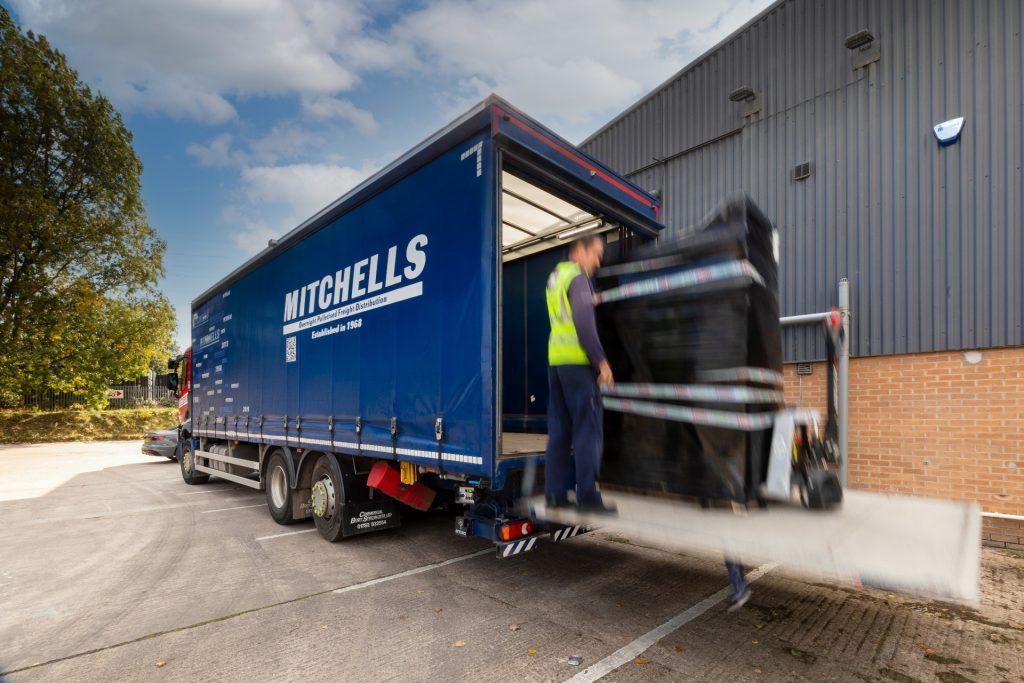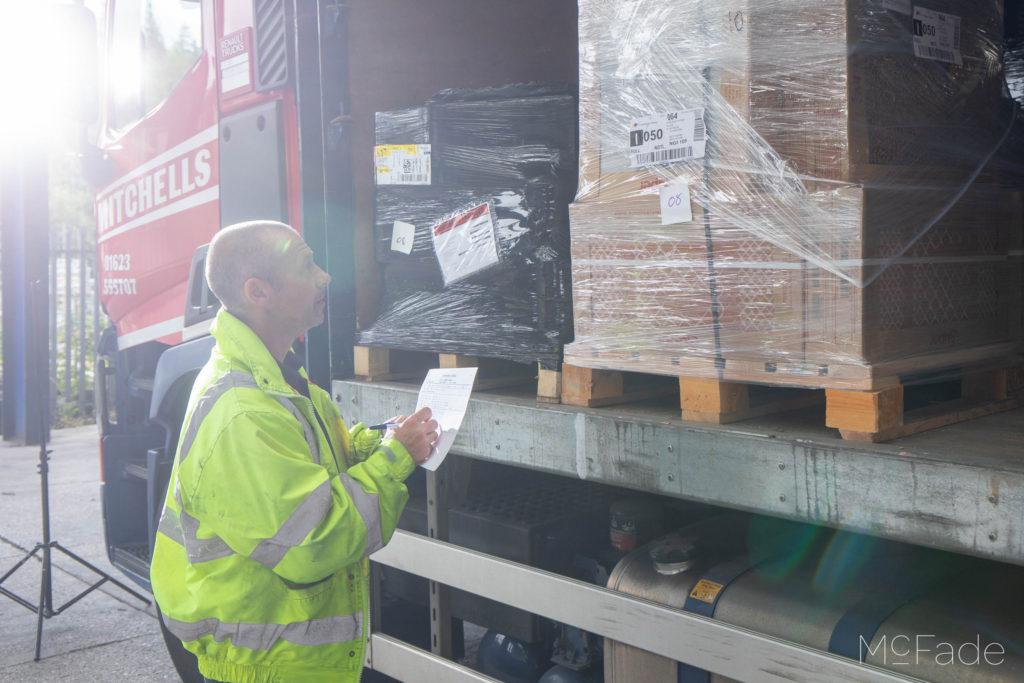ISPM 15 regulations are important and vital to get right when sending your deliveries. Not following the regulations can result in significant problems such as receiving fines, losing your goods, or even having them destroyed.
Wood packaging is a very common way for pests to travel. When your deliveries enter different countries and your pallet has an infestation this could wreak havoc on the new foreign environment. It aims to safeguard plant health and prevent the introduction of new pests into countries.
ISPM 15 requirements make international trade smoother by reducing delays and border rejections.
But there’s no need to worry, in this guide, we detail how to ensure you’re compliant with ISPM 15.
Contents
What is ISPM 15?
ISPM stands for International Standard for Phytosanitary Measures.
Phytosanitary measures protect humans, animals, and plants by preventing contamination, pests, or diseases that could harm another country’s plants and ecosystems.
ISPM lowers the chance of pests getting into and spreading through wood packaging like pallets and crates. Over 180 countries, including the UK, have adopted this globally recognised standard.
Phytosanitary measure 15 can lower the risk of recalls and product losses, improving your business’s reputation.
When did the regulation happen?
In the UK, ISPM 15 regulations came into force on 1st January 2021. This means that all wood packaging going to or leaving the UK must adhere to the standard by undergoing treatment and marking.
Who developed it?
The International Plant Protection Convention (IPPC) developed ISPM 15.
The IPPC is a global agreement aimed at stopping the spread of plant pests and diseases and encouraging control measures.
The ISPM 15 is the standard that many countries have adopted.
The IPPC first adopted ISPM 15 in 2002, and it has since been implemented by over 180 countries. It is now the most widely accepted international standard for regulating Wood Packaging Material (WPM).
Is ISPM 15 mandatory?
Yes, ISPM 15 is mandatory in the UK when shipping goods abroad using wood materials. This means that all WPM coming in and out of the UK must adhere to ISPM 15 by undergoing treatment and marking.
ISPM 15 accepts heat treatment, fumigation, and cold treatment as the treatment methods.

What wooden packaging is impacted?
ISPM 15 applies to all WPM thicker than 6mm, regardless of whether it’s made from hardwood or softwood. This encompasses wood-made packaging like pallets, crates, boxes, dunnage, and other forms.
What materials are exempt from ISPM 15?
There are some exemptions to the ISPM 15 regulation.
These include wood packaging material that:
- Are less than 6mm thick
- Consists entirely of processed wood (such as plywood, MDF, and particleboard)
- Used for domestic purposes
What countries require ISPM 15?
ISPM 15 is required by over 180 countries for wood packaging material (WPM) that they import or export. This includes the following countries/regions:
- European Union (EU)
- Australia
- USA
- Canada
- Norway
- Switzerland
Find the full list of countries requiring ISPM 15.
Why do wooden pallets need to be heat-treated?
Pallets need to be heat treated to prevent the spread of pests and diseases. Wood packaging material is a common way for pests to move around, so treating it reduces the risk of infestations.
The heat treatment process kills any insects that may be present in the wood. They heat the wood to a high temperature, usually 60 degrees Celsius, for about 30 minutes. This kills all insects, including eggs and larvae.
How do you heat treat a wooden pallet?
To heat treat a wooden pallet, you will need a heat treatment chamber. This refers to a large, enclosed space capable of reaching the necessary temperature.
After heating the pallet, they cool it down and then apply the ISPM 15 mark.
If you are not comfortable heat treating a wooden pallet yourself, you can take it to a professional heat treatment facility.

Can you reuse heat-treated pallets?
You can reuse heat-treated ISPM 15 pallets. The treatment process eliminates any pests in the wood, ensuring the pallets’ safety for further use. There’s no need to re-treat the pallets unless they sustain damage.
Here are some tips for reusing heat-treated ISPM 15 pallets:
- Inspect the pallets carefully for any damage
- Repair any damage before reusing the pallets
- Avoid using pallets that exhibit cracks or splits.
- Dispose of pallets that are beyond repair
By adhering to these tips, you can contribute to the safe and effective reuse of heat-treated ISPM 15 pallets.
However, ISPM 15 treated wood packaging materials do not provide permanent protection from pests. Please ensure you check if your packaging has any signs of infestation before reusing a pallet. Otherwise, national customs agencies may instruct its destruction.
How can I determine if they have heat-treated my pallet?
They will stamp all pallets to indicate that they have undergone this process. Pallets that have undergone the ISPM 15 process will bear an authentication mark recognised worldwide.
The ISPM 15 marking is a combination of the IPPC logo and the two-letter ISO country code. The IPPC stamp is an ear of corn with the letters “IPPC” next to it.
The ISO country code is a two-letter abbreviation for the country where the wood packaging material has been treated. Pallets from the US will have “US” as their country code, while pallets from Great Britain will have “GB” as their country code.
Here is an example of the IPPC certification symbol:
Image credit: The UK Wood Packaging Material Marking Programme
Other symbols on WPM may include:
- A certification number – this unique number allows the WPM to be traced back to its treatment provider.
- HT – This code means the WPM has been ‘heat treated’ in a dry kiln heat chamber or with conventional steam at a minimum of 56°C for at least 30 minutes.
- DH – this represents heat treatment with ‘dielectric heat’, using electromagnetic waves to create heat.
- MB – Methyl Bromide Fumigation is a method of killing pests in WPM
- SF – Sulfuryl Fluoride Fumigation is another method of pest control in WPM
Heat-treated pallet inspection and mark removal process
The inspection and mark removal process is a series of steps taken to make sure your WPM follows the ISPM 15 regulation.
The process typically involves the following steps:
- Inspectors check the pallet to confirm it’s made of wood and has the correct thickness.
- They heat treat the pallet to a temperature of at least 56 degrees Celsius for at least 30 minutes.
- Afterwards, they cool the pallet and re-inspect it to ensure proper heat treatment.
- They mark the pallet with the ISPM 15 mark.
- Finally, they store the pallet in a secure location until it’s ready for shipment.
- If the heat treatment process damages a pallet, you will need to re-inspect and re-mark it. If you repair or recycle a pallet, you will also need to re-inspect and re-mark it.
Usually, the mark removal process occurs when you no longer need a heat-treated pallet or when you are repairing or recycling it.
Here are some of the things to keep in mind during the heat-treated pallet inspection and mark removal process:
- You must have the pallet inspected by a qualified inspector.
- You must heat treat the pallet to the correct temperature and for the correct amount of time.
- You must mark the pallet with the correct ISPM 15 mark.
- You must remove the mark properly.
What are the benefits of heat-treated pallets?
Here are some of the benefits of heat treating your pallets and other wood packaging materials:
- They help to protect plant health and prevent the spread of pests.
- They are more durable and can withstand harsh weather conditions.
- They are less likely to rot or warp.
- They are lighter than untreated pallets, which can save on shipping costs.
What happens if my pallet has an infestation?
If your pallet has an infestation, it can spread to other pallets and goods and can also damage the wood. The pests from the infestation can also be harmful to human health!
Here are some of the things that can happen if your pallet has an infestation:
- The pallet may damage the goods
- Customs may reject the pallet
- They may destroy the pallet
- The pests may spread to other pallets and goods
- The pests may be harmful to human health
So, it’s important to make sure you do not use infested wood packaging material. Checking thoroughly before use will help to avoid an infestation.
If you do find any signs of pest infestation please remove the WPM and isolate it. Contact a pest control professional to have the pallet treated.
FAQs
- Is MDF included in the ISPM 15 regulation?
No, MDF is not subject to ISPM 15. This happens because MDF is produced by bonding wood fibers together under high pressure, making it ineligible as Wood Packaging Material (WPM).
- What pallets are exempt from ISPM 15?
ISPM 15 exempts some pallets, including those that are 6 mm or less in thickness and those used exclusively for domestic transport.
- Can you burn heat-treated wood?
It is safe to burn heat-treated wood. The heat treatment process does not change the chemical composition of the wood, so it is safe to burn.
- Does my pallet need an ISPM 15 stamp?
Customs authorities in the importing country may reject a pallet if it lacks an ISPM 15 stamp
- Does the UK require ISPM 15 after leaving the European Union?
As part of the EU, pallets from the UK didn’t need to follow ISPM 15 requirements, but after leaving the EU, the UK is now considered ‘international’ and must comply with these requirements.
Conclusion
At Mitchells, we want to ensure our customers have a seamless and stress-free experience. We also want to ensure that you are well-prepared when sending your pallets domestically and internationally.
To prepare your goods and pallets correctly you can read our guide on how to prevent damage to goods during transit.
By following the guide above you can rest easy knowing that you are ISPM 15 compliant. We can take care of the rest!